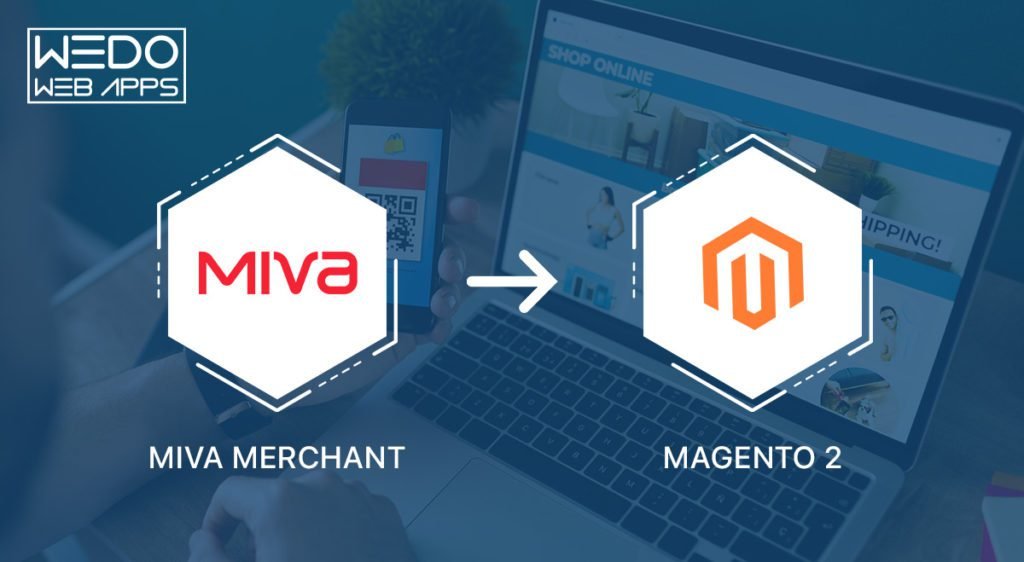15 Mar, 2023 | Magento development
MIVA merchant to Magento 2 migration

Preparing for Migration
Preparing for a migration from MIVA to Magento 2 is an important step that requires careful planning and preparation. It’s essential to take the time to assess the current website’s functionality and design, identify necessary data and information to transfer, select a Magento 2 hosting provider, and create a migration plan and timeline. The following steps and tips can help ensure a successful and smooth migration process:-
Assessing the Current Website's Functionality and Design
-
Identifying Necessary Data and Information to Transfer
-
Selecting a Magento 2 Hosting Provider
-
Creating a Migration Plan and Timeline
Tips for Ensuring a Smooth Migration Process
To ensure a smooth migration process, businesses should consider the following tips:-
Test the migration process:
-
Back-up data:
-
Communicate with stakeholders:
-
Monitor performance:
-
Train staff on using Magento 2:
Migrating from MIVA to Magento 2
Migrating from MIVA to Magento 2 requires a series of steps to be followed carefully to ensure a successful transition. In this section, we will provide a step-by-step guide to migrating from MIVA to Magento 2, including installing Magento 2, configuring Magento 2, migrating data from MIVA to Magento 2, migrating products, categories, and other content, migrating customer data and orders, and testing the new Magento 2 website.Installing Magento 2
The first step in the migration process is to install Magento 2 on the server. This involves downloading the latest version of Magento 2 from the official website and uploading it to the server. Once uploaded, the Magento 2 installation wizard will guide users through the installation process, including configuring database settings and creating an admin account. For more detailed information on installing Magento 2, refer to the official Magento 2 installation guide.Configuring Magento 2
After installing Magento 2, the next step is configuring it to meet the business's specific requirements. This involves setting up target store information, configuring payment and shipping address options, and customizing the website's design and functionality. The Magento 2 admin panel provides a user-friendly interface for configuring these settings. Additionally, numerous third-party extensions and themes can be used to customize the website's design and functionality further.Migrating Data from MIVA to Magento 2
Once Magento 2 is installed and configured, the next step is to migrate data from MIVA to Magento 2. This involves transferring product information, customer data, order history, and other relevant information from the MIVA database to the Magento 2 database. Various tools and extensions, including the Magento 2 Data Migration Tool, can assist with this process. This Magento migration tool automatically allows users to migrate data from MIVA to Magento 2.Migrating Products, Categories, and Other Content
After migrating data from MIVA to Magento 2, the next step is to migrate products, categories, and other content. This involves transferring all product information, including product meta description, images, and pricing, to Magento 2. Additionally, categories, pages, and other content must be migrated. Various tools and extensions are available to assist this process, including the Magento 2 Product Import/Export Tool.Migrating Customer Data and Orders
The next step is to migrate customer data and orders; in other ways, we migrate customers, preserving relationships. This involves transferring all customer information, including customer accounts, addresses, and order history, to Magento 2. Additionally, any outstanding orders from the MIVA website must be migrated to Magento 2 to ensure that customers' orders are not lost during the migration process. Various tools and extensions, including the Magento 2 Customer groups Import/Export Tool, can assist with this process.Testing the New Magento 2 Website
The final step in the migration process is thoroughly testing the new Magento 2 website. This involves checking all website functionality and supports migrating custom products, checkout processes, and other critical website areas. Additionally, ensuring that all data has been transferred accurately and completely and that the website performs optimally is important. Businesses should test the website on different browsers and devices to ensure it is accessible and user-friendly for all visitors.
Additionally, ensuring that all data has been transferred accurately and completely and that the website performs optimally is important. Businesses should test the website on different browsers and devices to ensure it is accessible and user-friendly for all visitors.
Key Differences Between MIVA and Magento 2
MIVA and Magento 2 are both e-commerce platforms that enable businesses to create and manage online stores. However, there are significant differences between these two platforms in terms of their features, functionalities, and capabilities. In this section, we will compare and contrast the key features and functionalities of MIVA and Magento 2, and discuss the advantages of Magento 2 over MIVA.MIVA vs. Magento 2: Key Differences
MIVA is a proprietary e-commerce platform that provides businesses with various features and functionalities, including customizable design templates, SEO optimization tools, and a range of payment and shipping, and billing address options. Magento 2, on the other hand, is an open-source e-commerce platform that provides businesses with a more robust and flexible set of features and functionalities. Some of the key differences between MIVA and Magento 2 are:-
E-commerce Features:
-
SEO Capabilities:
-
Scalability and Performance:
-
Security and Stability:
Advantages of Magento 2 over MIVA
There are several advantages of Magento 2 over MIVA, including:-
More Robust and Flexible E-commerce Features:
-
Better SEO Capabilities:
-
Improved Scalability and Performance:
-
Enhanced Security and Stability:
Post-Migration Tasks
Once the migration from MIVA to Magento 2 is complete, businesses must focus on post-migration tasks to ensure that the new website functions optimally and delivers the desired results. Here are some of the key post-migration tasks that businesses need to consider:-
Monitor the new Magento 2 website for any issues.

-
Conduct performance testing to ensure optimal site speed and functionality.
-
Optimize the site for SEO.
-
Implement new features and integrations.
-
Tips for ongoing maintenance and updates to the Magento 2 website
-
Monitor website security
-
Implement analytics and reporting tools.
-
Provide ongoing customer support.
-
Continuously improve the website.
Conclusion
Migrating from MIVA to Magento 2 can be a complex process, but it's often worth it for businesses looking to take their e-commerce operations to the next level. Magento 2 offers a range of features and functionalities that can help businesses improve their website's performance, scalability, security, and SEO capabilities. However, the key to a successful migration is proper planning and preparation and ongoing maintenance and optimization after the migration is complete. Following the steps outlined in this guide, businesses can ensure a smooth migration process, from preparing to completing post-migration tasks. They can also benefit from the experiences of other businesses that have successfully migrated to Magento 2 and experienced the benefits firsthand. Whether you're a small business owner or a large enterprise, migrating to Magento 2 can help you stay ahead of the competition and provide your customers with an exceptional online shopping experience. So, take the first step and start planning your migration today!Frequently Asked Questions
It is possible to migrate directly from MIVA to Magento 2; it's important to ensure that all necessary data and information are transferred properly to avoid any issues during the migration process.
The migration process can vary in duration depending on the complexity of the website and the amount of data to be migrated. Planning and setting realistic timelines for the migration process is important to ensure a smooth transition.
Re-designing the website during migration is unnecessary, but it can be a good opportunity to refresh its look and feel and improve the user experience. However, it's important to ensure that redesign efforts do not negatively impact the website's functionality or the migration process.

